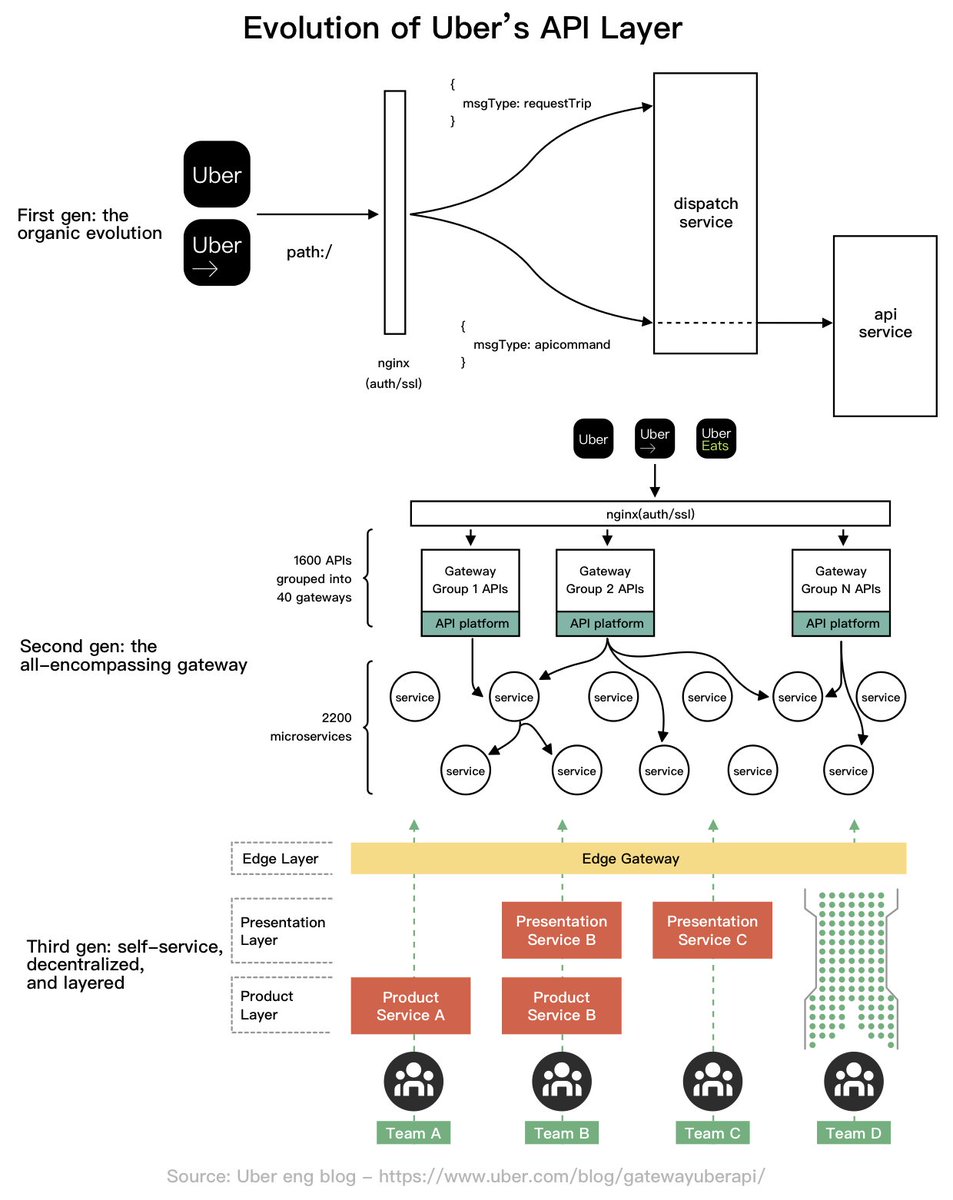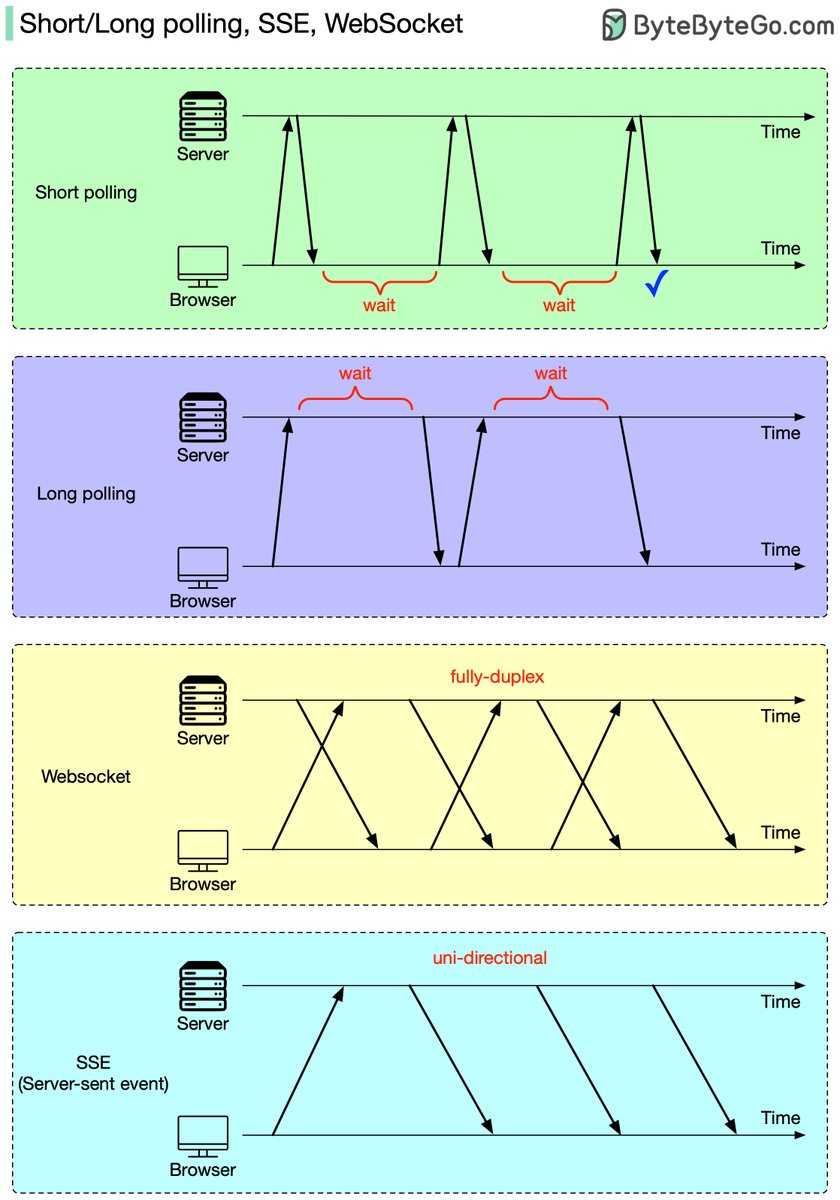
/1 How can Redis be used?
There is more to Redis than just caching.
Redis can be used in various scenarios, as shown in the diagram.
There is more to Redis than just caching.
Redis can be used in various scenarios, as shown in the diagram.
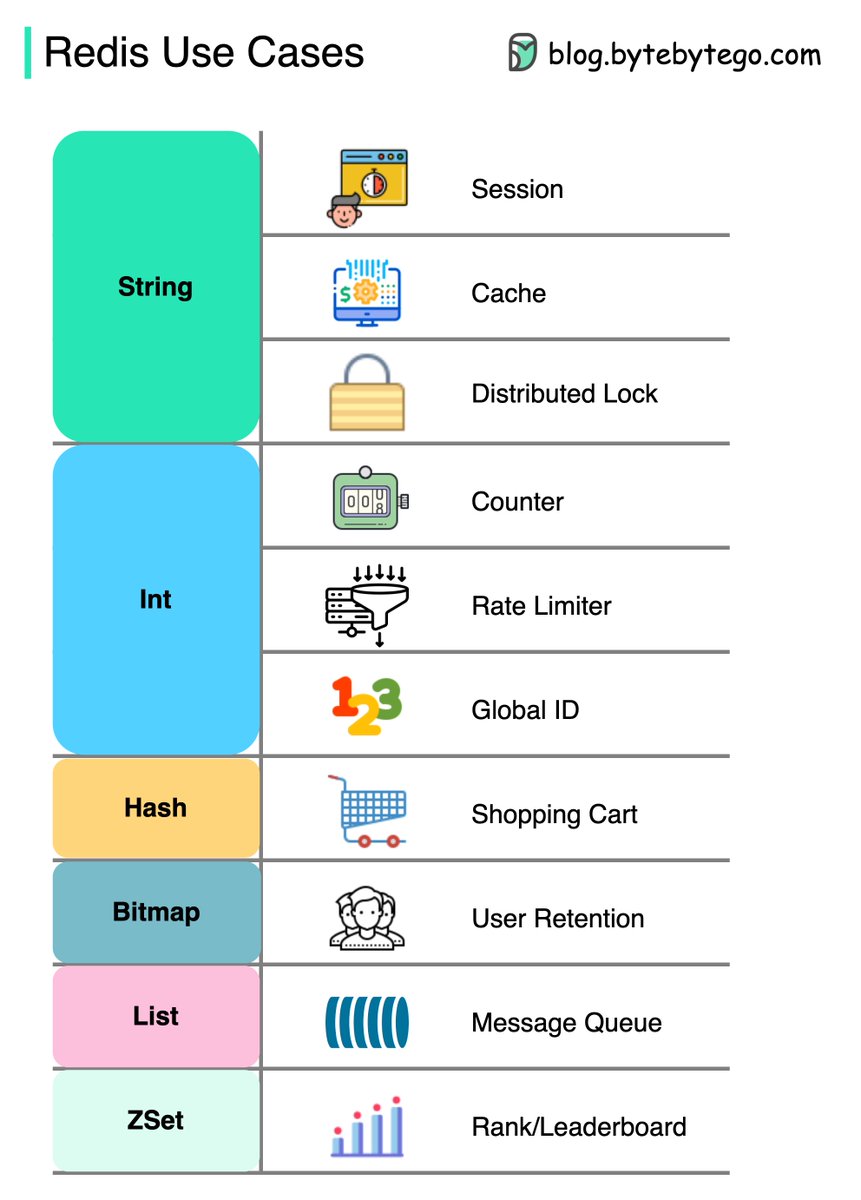
/2 🔹Session
We can use Redis to share user session data among different services.
🔹Cache
We can use Redis to cache objects or pages, especially for hotspot data.
🔹Distributed lock
We can use a Redis string to acquire locks among distributed services.
We can use Redis to share user session data among different services.
🔹Cache
We can use Redis to cache objects or pages, especially for hotspot data.
🔹Distributed lock
We can use a Redis string to acquire locks among distributed services.
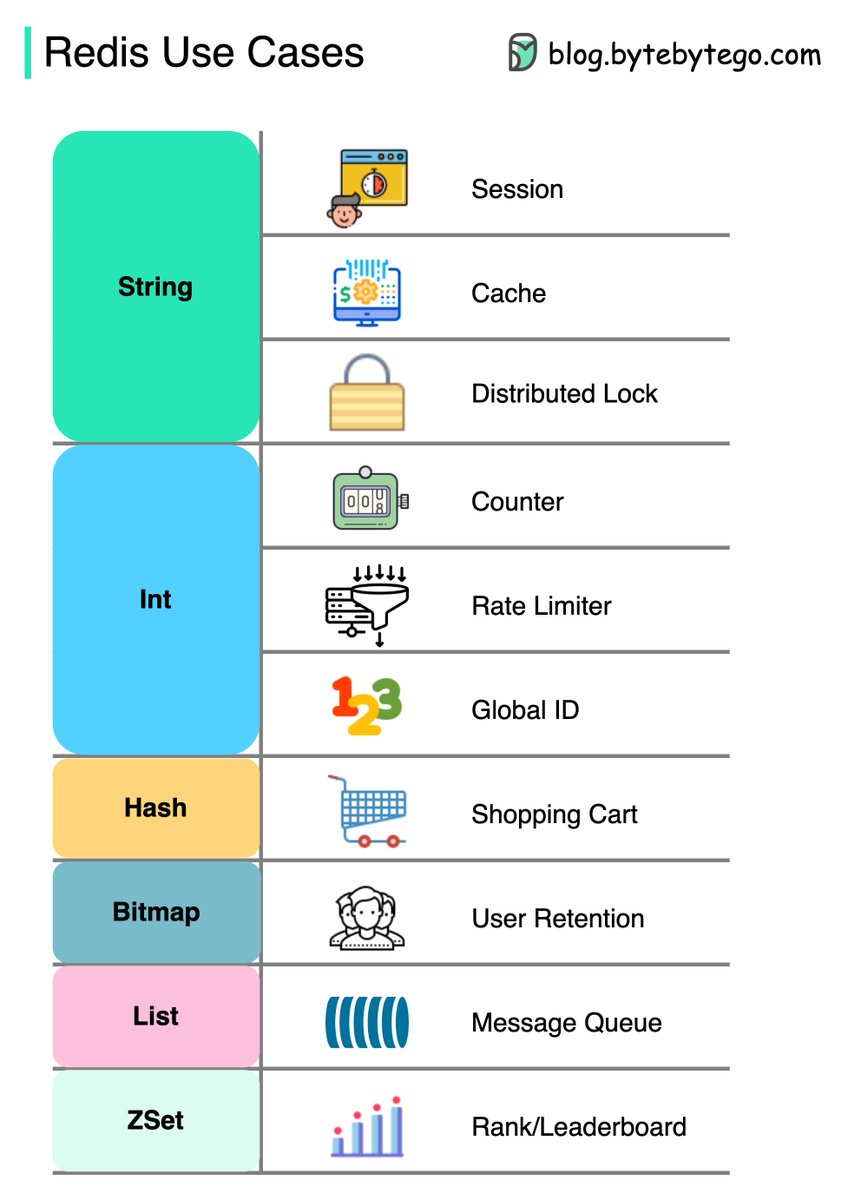
/3 🔹Counter
We can count how many likes or how many reads for articles
🔹Rate limiter
We can apply a rate limit for specific user IPs
🔹Global ID generator
We can use Redis Int for global ID
🔹Shopping cart
We can use Redis Hash to represent key-value pairs in a shopping cart
We can count how many likes or how many reads for articles
🔹Rate limiter
We can apply a rate limit for specific user IPs
🔹Global ID generator
We can use Redis Int for global ID
🔹Shopping cart
We can use Redis Hash to represent key-value pairs in a shopping cart
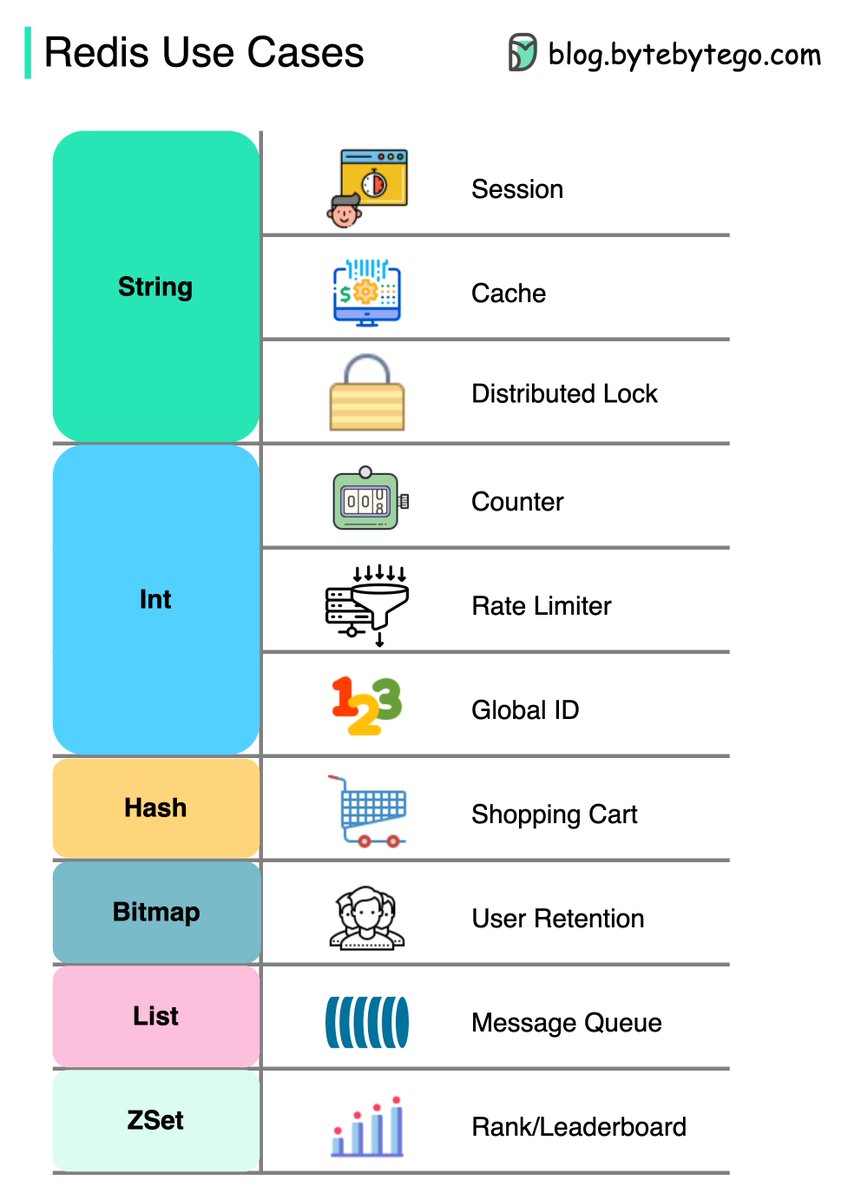
/4 🔹Calculate user retention
We can use Bitmap to represent the user login daily and calculate user retention.
🔹Message queue
We can use List for a message queue.
🔹Ranking
We can use ZSet to sort the articles.
We can use Bitmap to represent the user login daily and calculate user retention.
🔹Message queue
We can use List for a message queue.
🔹Ranking
We can use ZSet to sort the articles.
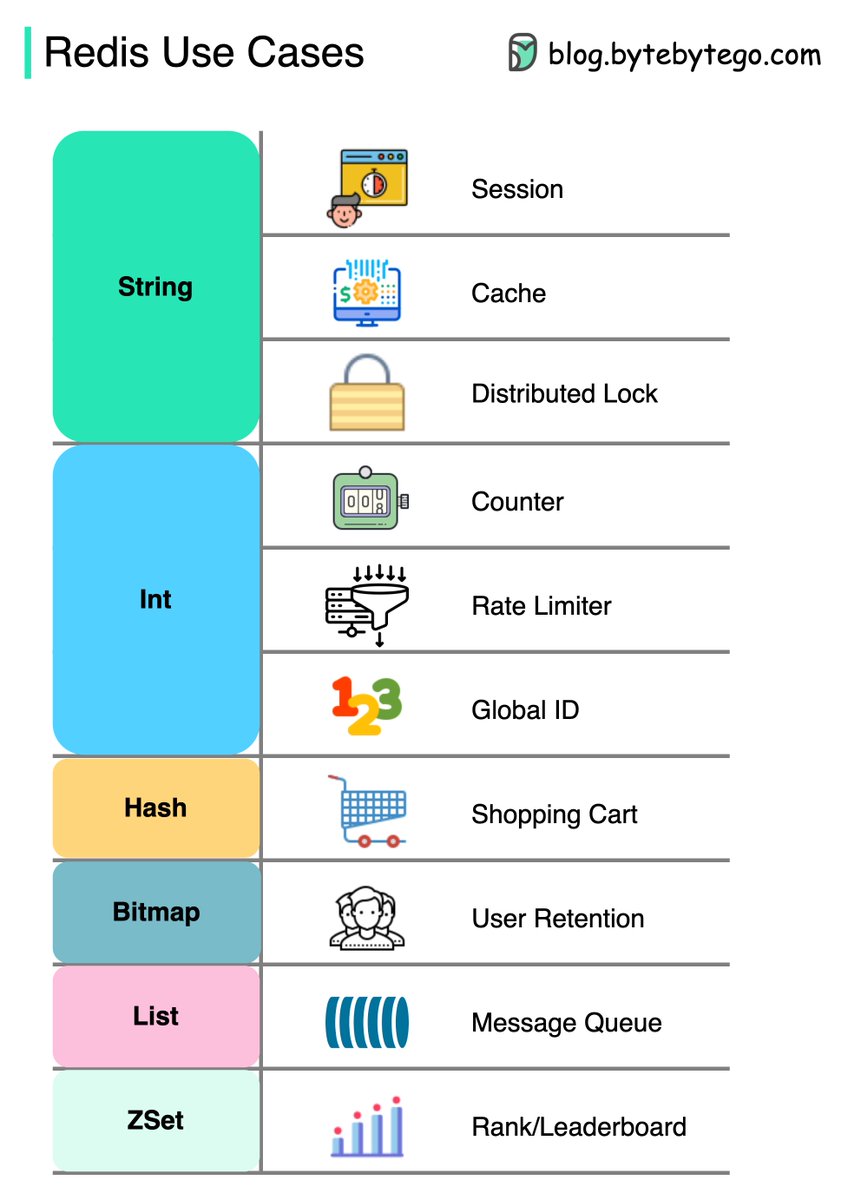
/5 👉 Over to you: Have you used Redis for other use cases? What are they?
/7 I hope you've found this thread helpful.
Follow me @alexxubyte for more.
Like/Retweet the first tweet below if you can:
Follow me @alexxubyte for more.
Like/Retweet the first tweet below if you can:
https://twitter.com/alexxubyte/status/1610678713087295490
• • •
Missing some Tweet in this thread? You can try to
force a refresh




